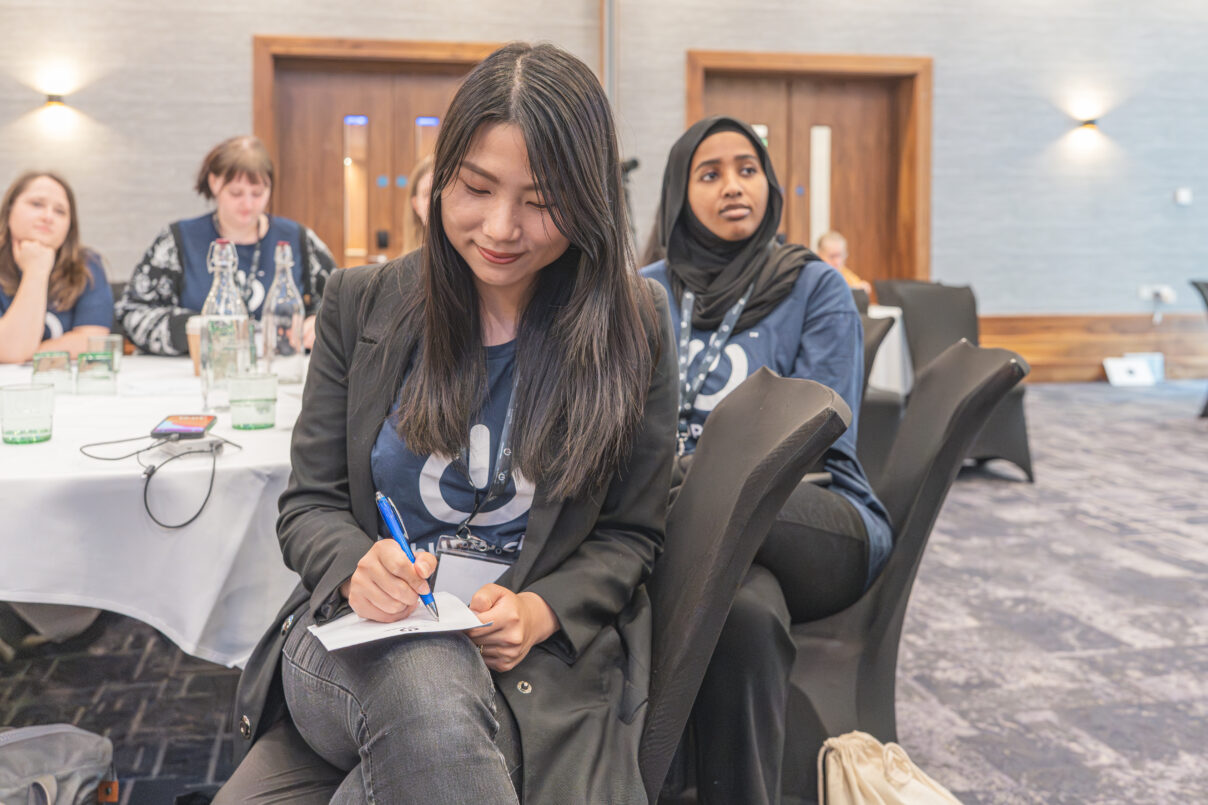The 5 Most Talked About Tech Skills and Where to Learn Them for Free
Blog by Dr Paula Beer, Educational Consultant, Academic and TechUP Tutor.
Through general industry knowledge and comparing the different responses from AI tools we’ve come up with a list of the five most talked about tech skills….but I am not going to tell you what they are just yet.

In the following short series of blog posts I will briefly outline each of the five tech skills and suggest two or three resources. Before I got a long way into this blog, it had been my intention to give a predicted timescale for completing the courses but each of the platforms have numerous resources with varying timescales so giving one timescale wouldn’t be helpful. It depends on what you are trying to achieve and how much time you want to (or can!) devote.
However, it’s important to be strategic about how you use your time and which resources you use. So, let’s start with some suggestions about personal organisation and creating an effective study habit.
Start with a fresh Google Account
Most of the platforms that you will come into contact with need to fund their resources, so they may offer some free resources but what they really want is paying customers. So, this is going to mean that giving your email address will result in a tonne of marketing emails. To avoid these emails cluttering up your personal email, give yourself a fresh start by setting up a Google account which is just for your training and job application journey.
Then, where possible, when logging into new training platforms accept the option to login using your Google account. This has the added benefit of keeping all of those “hey you’ve completed x module” or “are you ready to upgrade?” messages in one place too, leaving your personal email unencumbered.
Develop a good study habit
In the words of somebody wise (origin disputed) “Time passes, whether you use it or not”. So, let’s use your time and start with developing a study habit that works for you. You may have other work, sport, caring, study or social commitments, so you need to carve out a time that is specifically for this and maximise how you study.
There are three layers to this approach. The first is identifying how much and when you have time every week. The second is tracking what you are doing. It is important to do both as when “time passes” and you go off your initial track you need an anchor so that you can pull yourself back to where you left off and not waste time berating yourself or redoing activities. The third is how to maintain focus once you are engaged in a study session.

1. So if we look at the first layer, once you have identified your slot (perhaps it is early on Sunday morning before anyone else is up or it’s a couple of hours every day) write this down somewhere as your commitment to yourself. Even consider telling your flatmates or family that this time is protected or if it’s compromised you will try to catch back up.
2. Then the second layer is how do you track what you’re doing? In the section above (start with a fresh Google account) I spoke about using a brand new Google account so that any sign ups can be efficiently done via a Gmail address and any clutter can be managed. Well, this also means that you have a lovely empty Google Drive in which to manage your work. So just start with a very simple Google Doc diary.
Every time you sit down write a note to yourself about what you are going to do during the session. Then before you wrap-up, write a note to yourself about what you’ve done and what you are going to start on next time. Speak to yourself in an encouraging and supportive way.
You can also use the diary as a sort of scrap book for other resources or ideas, then you can easily use Ctrl+F and a keyword to find the resource later on. I used this technique throughout the seven years of my part-time PhD. A busy working parent who has to suddenly stop working and deal with other priorities really needs this level of tracking. My Google Doc diary ended up being nearly 1.5 times the length of my doctoral study – which itself was 70,000 words long, so you can see that I’m a big fan of this approach and it works. I would even put encouraging Youtube clips inside the text to return to when I really needed a boost.
Here is a present from me to you. Hayley from the US TV show Modern Family using the phrase “I’m not going anywhere” in about seven different ways from the physical “I’m not moving out of this parking space” to “I’m going to finish what I started” to motivate herself at a job interview in the face of harsh rejection. It still gives me goosebumps.
3. The third layer is about maintaining focus. If you are already great at this….just keep doing that. If not, try the Pomodoro technique. This involves timing uninterrupted blocks of work and timing your breaks too. So, decide what you are doing, then set your timer for 25 minutes and do only that for 25 minutes, then give yourself a timed 5 minute break. The break might be a quick chat with family or flatmates, grabbing a drink, a quick walk or watching a Netflix show for 5 minutes.
Be strict, it’s worth it.
What does free really mean?
In order to get some of the courses for free you may have limited time to complete them so tracking the start and end dates of some courses will be essential to getting the best “value for money”. Some other courses, which would normally be paid for courses, offer the user the option to “audit for free” which means that you can use the resources but won’t get support or a certificate for completion.
Even platforms which have free plans will constantly nag you to upgrade to their paid for plans. Just be thick-skinned and click the “Yes I got that” button (or whatever) and carry on with your free course. Then in the future when you are a successful software developer (or website designer, or data analyst etc.) you can give back to the community with some wonderful free courses. Good idea heh?
Our commitment to you dear reader

If there is a resource on this list then I have checked that it is truly free (I had to delete some of my initial suggestions!!) and have spent at least 30 mins (many times much more) on each resource checking that they were genuinely free and tolerable. In addition, what I’ve found is that some courses look like they are free but then after you’ve cleared the introduction to the course or the first module you can’t progress any further without paying, though it didn’t look that way when you started.
However, the landscape of free training is constantly changing so something that was once good or free may (within a short time) become not free or not so good or even not so in existence. Occasionally courses are archived, probably as they are being updated.
So all I can really say is that in the summer of 2025 these courses were pretty decent and did exist.
Next up
So, in the next blog posts I will introduce five of the most talked about tech skills, along with free resources to help you use your time wisely. Some of the resources take quite contrasting approaches so I think that a solid method for becoming very knowledgeable and skilful in your chosen area would be to use a couple (not too many) different resources to really solidify your development. It staves off boredom too, which can creep in when things are too samey.
One of the most frustrating things about trying to move into tech is that there are perhaps too many opportunities to improve your skills and whilst your money is valuable, so is your time. It makes good sense to get to know what you enjoy and what is free before you decide to make any bigger commitments that will take money and more time.
